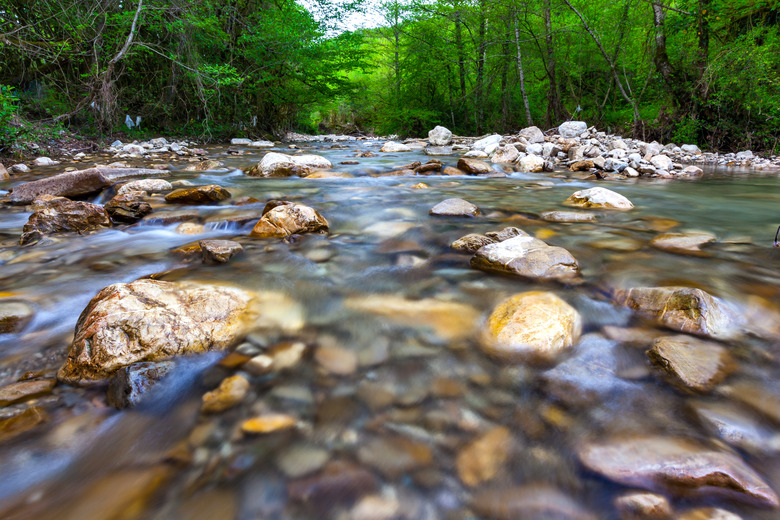Elements Of An Ecosystem
An ecosystem consists of the interdependent and interacting components of the natural environment in a geographic area. It has both living elements, such as plants and animals, and non-living elements, such as soil and water. Energy from the sun cycles through an ecosystem. Material elements also cycle through an ecosystem via foodchains and other pathways.
Biotic Components
Biotic Components
The biotic components of an ecosystem are living creatures such as plants, animals and microbes. Plants are called primary producers since they produce food through photosynthesis. Consumers of various levels get food from the producers. Primary consumers feed on the producers and secondary consumers feed on the primary consumers. Microbes, the decomposers, break down dead organisms and waste matter. This chain of production, consumption and decomposition is known as a food chain.
Abiotic Components
Abiotic Components
The abiotic components of an ecosystem are the climate, soil, water, minerals, sunlight, precipitation and other non-living elements that sustain life in the ecosystem. Water, carbon dioxide and sunlight are used by plants to produce food in many ecosystems. In other ecosystems, the primary source of food is dead organic matter. Soil texture and chemistry controls plant growth. Maintaining the right balance of abiotic components in an ecosystem is critical to its health and survival.
Energy Flow
Energy Flow
One of the major processes in an ecosystem is the energy transformation that takes place as energy, obtained initially from the sun, moves through the food chain. At each stage of the food chain, the consumer retains only a fraction of the energy it takes in. The rest of the energy is dissipated as heat and cannot be recycled. Since the ecosystem loses energy and depends on continued energy input from the sun, it is an open system with respect to energy.
Material Flow
Material Flow
The other major process in an ecosystem is the cycling of material in the form of nutrients. Unlike energy, material in an ecosystem is not brought in from an external source. Although it is chemically transformed, no material is lost in the cycle as it moves from the producers, through the consumers to the decomposers. An ecosystem, therefore, is a closed system with respect to material flow. The movement of elements such as carbon, nitrogen and phosphorus, through the ecosystem is also known as biogeochemical cycling.
Cite This Article
MLA
Datta, Sreela. "Elements Of An Ecosystem" sciencing.com, https://www.sciencing.com/elements-ecosystem-8071086/. 22 November 2019.
APA
Datta, Sreela. (2019, November 22). Elements Of An Ecosystem. sciencing.com. Retrieved from https://www.sciencing.com/elements-ecosystem-8071086/
Chicago
Datta, Sreela. Elements Of An Ecosystem last modified August 30, 2022. https://www.sciencing.com/elements-ecosystem-8071086/
